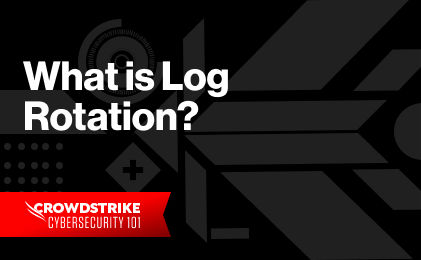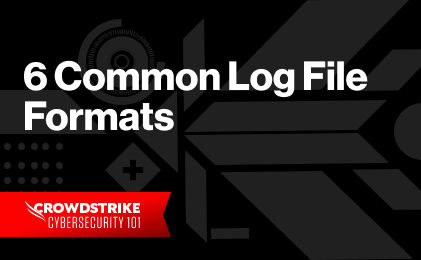Transform SOC with Next-Gen SIEM
Transform SOC with Next-Gen SIEM
What is log streaming?
Log streaming in cybersecurity refers to the real-time transfer and analysis of log data to enable immediate threat detection and response. Understanding this concept is crucial for anyone involved in maintaining the security posture of an organization. In this post, we'll explore what log streaming is, why it's important, its core components, and best practices to follow.
With log streaming, an organization sends log data — uninterrupted and in real time — from multiple sources to a central repository. From there, the log data can be stored and used immediately for analysis. This approach allows organizations to send and analyze data from events as soon as they’re logged. From the perspective of cybersecurity, this means facilitating instantaneous threat detection and response.
Different from traditional log collection
Traditional log collection methods take the batch processing approach. Logs are collected over a window of time (for example, every 10 minutes, every hour, or every day) before they are sent as a batch for analysis. This traditional approach introduces latency; you need to wait for a batch to process before you can use your log data. This delay can be detrimental, especially when you’re dealing with security threats that require immediate attention. Batch processing can also be resource-intensive, affecting system performance as large volumes of logs are processed all at once.In contrast, log streaming eliminates latency bottlenecks, providing a continuous flow (a “stream”) of data. Let’s look at why this is important.

2023 Threat Hunting Report
In the 2023 Threat Hunting Report, CrowdStrike’s Counter Adversary Operations team exposes the latest adversary tradecraft and provides knowledge and insights to help stop breaches.
Download NowWhy is log streaming important?
With immediate access to log data as events occur, security professionals can identify and respond to threats as they happen. The following list outlines several of the key reasons why log streaming is important:
- Real-time data analysis: Immediate access to log data for analysis makes it easier to spot irregularities and potential security threats as they happen.
- Scalability and efficiency: As your organization grows, the volume of your log data will grow with it. Log streaming scales easily, handling even massive volumes of data efficiently.
- Compliance and auditing: With all log data immediately available for auditing, log streaming can help organizations meet regulatory compliance requirements.
- Faster incident response: Incident response teams can act more quickly to mitigate threats when they have access to real-time data without any latency. This speed in incident response ultimately reduces the potential impact of threats on the organization.
For organizations that are serious about their cybersecurity, the real-time capability of log streaming makes it the preferred approach to capturing logs.
The core components of log streaming
What are the different technical pieces that make log streaming possible? The following core components work in tandem to create a secure pipeline for your log data:
- Log generators — such as servers, firewalls, and applications — are the initial sources of logs. They create the log data that offers valuable insights into system activity.
- Log aggregators are systems that collect the log data from various generators. An aggregator serves as the hub where data is processed and prepared for consumption.
- Log consumers are the tools responsible for the final analysis and storage of log data. They can range from specialized software solutions designed for deep analytics to simpler storage repositories.
Putting it all together
In a log streaming setup, the data flow is a systematic and well-coordinated process. Log data originates from the generators and is then sent to aggregators for processing. This step may include processes such as:
- Standardization
- Sanitization/redaction
- Deduplication
- Filtering
- Enrichment with contextual data
After processing, the data is passed to consumers for in-depth analysis and storage.
In modern cloud setups, enterprises often look to centralized log management platforms to facilitate log streaming. These platforms often handle the log aggregation and log consumption responsibilities. They also provide software (agents) to facilitate log generation. These agents are installed on servers or networks and are specifically configured to send logs to the platform.
Effective log streaming also depends on the use of standard protocols for collection and transmission (such as Syslog or HTTP) and standard formats for structuring data (such as JSON or plain text). These standards ensure that the format of log data is consistent, making it reliable and effective for machine-based analysis.

eBook: 8 Things Your SIEM Must Do
Download this eBook to learn about the downfalls of legacy SIEM and must-have capabilities to look for when evaluating your next SIEM.
Download NowSecurity considerations and best practices
Addressing key security considerations when implementing log streaming is crucial for maintaining a robust cybersecurity posture. The following considerations (and guidelines) will help you safeguard your data and ensure that your log streaming setup performs well and remains compliant.
- Encrypt data in transit: As log data travels between points in its flow — and ultimately to the consumer — ensure that adequate data encryption is in place. This prevents unauthorized access to sensitive information.
- Implement access control: Who is allowed to view, modify, or delete log data? By defining proper roles and permissions, you can maintain the integrity and confidentiality of your logs.
- Monitor for anomalies: Couple your log streaming setup with a continuous monitoring tool. This will help you detect unusual patterns or activities in your log data, and early detection will help you avert potential security incidents.
- Establish data retention policies: How long should you store your log data? To answer this question, you’ll need to balance operational needs with compliance requirements. Log retention policies are important, helping you manage your log data efficiently.
- Configure alerts: Along with continuous monitoring, set up automated alerts for specific events or anomalies that may indicate security threats. With timely alerts, you’ll see quicker incident response from your security team.
- Conduct regular audits: You should periodically review your log streaming infrastructure to ensure it meets security and compliance standards. In addition, performing regular checks may help you identify areas for improvement.
Get started with log streaming with CrowdStrike Falcon LogScale
As we’ve seen, log streaming is essential to your cybersecurity playbook. It offers real-time data analysis, scales flexibly, and helps you with compliance and faster incident response.
CrowdStrike® Falcon LogScale™ revolutionizes threat detection, investigation, and response by uncovering threats in real time, accelerating investigations with blazing-fast search and collecting up to one petabyte of data a day to achieve boundless visibility. With Falcon LogScale, you can log everything to answer anything for threat hunting, forensics, and compliance. Affordable cloud and self-hosted subscription options allow you to retain all your security data for years while saving up to 80% compared to legacy security information and event management (SIEM) solutions.
When you’re ready to employ log streaming, sign up to try the CrowdStrike Falcon® platform for free. Alternatively, you can contact CrowdStrike directly to learn more.

Falcon LogScale in Action
Watch this demo to find out how to detect, investigate and hunt for advanced adversaries with Falcon LogScale.
Watch Now






